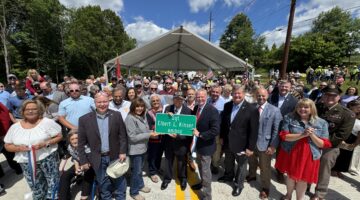The more planning that is done upfront, the less “gotchas” throughout the life of a power delivery project. While not the most surprising revelation, it has consistently proven to be true in my nearly 30-year career as an engineer in the power delivery industry.
Overall, “gotchas” are bad news. When unforeseen circumstances throw design and construction progress off track, projects take longer and are more costly to build. And, it can be deflating to hear a client or a colleague say, “Why didn’t we think of this sooner?” Or, “Looking back, it would have made more sense to do this instead?”
This unfortunately happened on a substation expansion project I was working on, where all procurement of materials was being handled by the client. The pace at which the client was collecting information from vendors was much slower than the timing of engineering drawings. Engineering had to make educated assumptions and then updates to drawings had to be made in the field, wreaking havoc on the construction schedule and increasing costs. Had the client used an engineering, construction and procurement (EPC) approach, much of this could have been avoided.
While hindsight can play an important role learning and improving over time—especially with highly complex, technical work—why not add a little proactive foresight into the mix to drive performance even more?
The good news is that proactive planning and collaboration among the client, engineering, procurement, construction and operations is becoming more common. A key driver of this shift is that more utilities are adopting the use of integrated project delivery models, such as EPC and design-build.
I once worked with a client who shifted from an engineering-only to an EPC project delivery model when they realized that they didn’t have the in-house resources needed to complete the project within the expected time frame. Using the EPC model, the client was consulted when the need arose rather than having to support the project on a daily basis, allowing them to focus on other areas of their work. The EPC approach also generated a good flow of communication and collective brainstorming among the project team—one of the best antidotes to a “gotcha” situation.
In other cases, clients experienced costly delays, which partially could have been avoided with an EPC approach. Here’s an example:
• An engineer starts to receive calls about missing materials in the field.
• The client, who was responsible for procuring materials, checks to see if the material were ever ordered through their internal procurement group.
• It was determined that the material had been ordered, however the engineer—or other members of the project team—did not have access to the purchase order.
• When the material was delivered on site, the field personnel for the client did not prepare a material receiving report or inspect the material for damage.
The lack of coordination and lag time between the steps in the process underscore the importance of an integrated approach—where everyone is focused on warding off unexpected issues or delays.
In my experience, when there is fluid, ongoing dialogue and a well thought-out process, the result is a solid, realistic plan. If engineering is developing a site layout for a new substation, upfront input from the construction team can add value to the process. For example, if you need to go under transmission lines to get to site, the construction team can help determine what clearances are needed to safely build the work. Or, the team may explore different access points to the site.
An integrated, collaborative approach can also lead to better solutions. Engineering may be working under the assumption that construction work cannot be done under a specific set of energized transmission lines, resulting a lag in the project schedule. By engaging construction early, the work can likely be divided and sequenced in a more efficient way without additional risks or compromising safety.
As the demand for more timely, cost-effective project delivery increases, so will the pressure to eliminate “gotcha” moments. With a little more foresight—and truly starting projects with the end in mind—we will be well equipped to tackle this challenge.
About the Author
Alesia Klein, P.E., is an engineering manager with Kiewit and brings over 27 years of industry experience leading power delivery projects, developing estimates, and providing technical guidance. She has a background designing 69kV to 500kV substations for multiple utilities and has significant experience estimating, managing schedules during construction and overseeing budgets.


